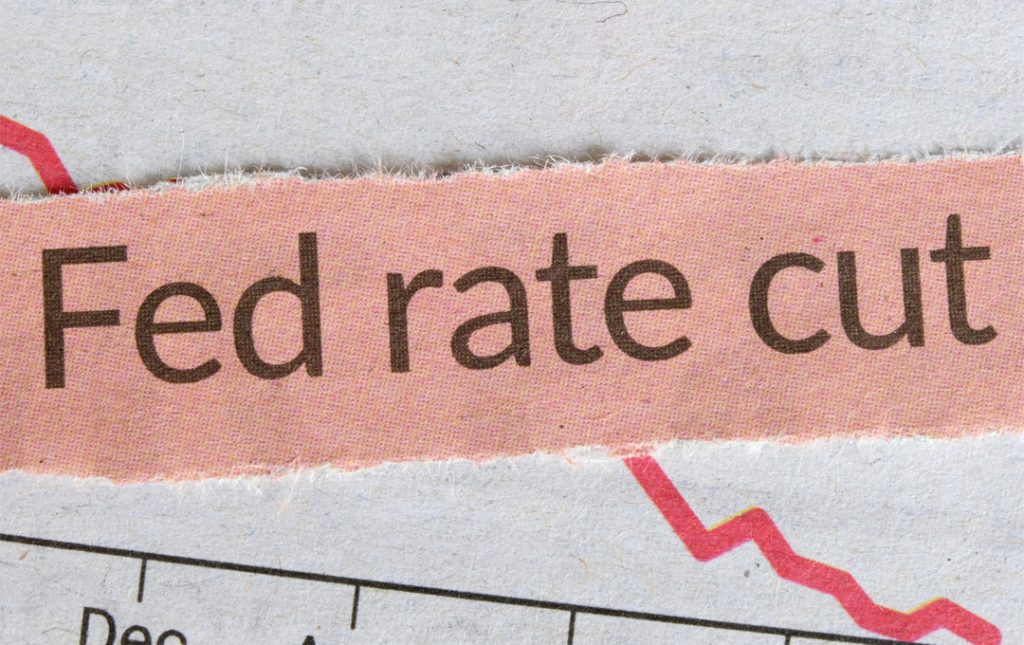This week saw significant decisions from three of the world’s most influential central banks—the Federal Reserve (FOMC), Bank of England (BOE), and Bank of Japan (BOJ). Their policies set the tone for global markets, especially regarding interest rates and economic growth. Let’s dive into the details and implications of these announcements for the global financial landscape.
Federal Reserve Cuts Rates by 50 Basis Points
The Federal Reserve took center stage this week by cutting interest rates by 50 basis points, bringing the federal funds target range to 4.75% – 5.00%. This marked a bold move aimed at combating economic slowdown, while also giving a strong signal that further cuts are on the horizon.
Key Takeaways:
- Aggressive Rate Cut: This significant reduction underscores the Fed’s commitment to bolstering economic activity amid signs of slowing growth.
- More Cuts Expected: The Fed’s projections show that additional rate cuts are likely by year-end, with 100 basis points of total reductions anticipated by the close of 2025.
- Market Reaction:
- U.S. Dollar Weakens: The U.S. dollar saw notable declines against most major currencies. The DXY (Dollar Index) fell to 100.69, near its lowest point in over a year, as markets priced in future rate cuts.
- Equities Stay Muted: Despite the rate cut, stock markets displayed only modest movement. However, this calm may not last, as investors brace for further data releases that could bring additional volatility.
- Bonds and Commodities Rise: Lower interest rates reduced the opportunity cost of holding non-yielding assets like gold and bonds, driving their prices higher. What’s Next for the Fed?
The Fed’s decision clearly indicates its intent to foster economic growth while keeping inflation in check. However, with the U.S. labor market showing mixed signals, future rate decisions could hinge heavily on upcoming economic data—particularly jobless claims, retail sales, and inflation metrics.
Bank of England Holds Rates Steady at 5.5%
In contrast to the Fed, the Bank of England (BOE) decided to keep interest rates unchanged at 5.5% during its latest policy meeting. While the BOE has been one of the most aggressive rate hikers in recent years, it is now taking a more cautious approach as inflation shows signs of stabilizing.
Key Takeaways:
- Cautious Approach: The BOE is opting for a “wait-and-see” approach as the UK economy demonstrates resilience despite high inflation. The bank remains focused on maintaining balance between curbing inflation and ensuring stable growth.
- Sterling Surge: The pound rallied sharply following the BOE’s decision, hitting a high of $1.3276, its strongest level since March 2022. This rise reflects confidence in the BOE’s cautious strategy and the relative strength of the UK economy.
- Inflation Concerns: With inflation still elevated at 2.2%, the BOE is carefully monitoring core inflation, particularly the services sector, which has shown stronger-than-expected price growth. Future Outlook:
Markets are pricing in 42 basis points of rate cuts by the BOE by the end of 2024, as the central bank aims to balance inflation and growth without stifling economic momentum. The next major decision will be informed by further inflation and economic growth data.
Bank of Japan Holds Rates at 0.25%, Signals Potential Future Hikes
The Bank of Japan (BOJ) took a more conservative stance by maintaining its ultra-low interest rate policy at 0.25%. However, the central bank hinted that more tightening could be in store as inflation stabilizes and economic conditions improve.
Key Takeaways:
- Steady Policy, Optimistic Outlook: While no immediate changes were made, the BOJ acknowledged that inflation was moderating and economic recovery was underway, which opens the door for potential future rate hikes.
- Yen Volatility: The yen remained volatile, with USD/JPY fluctuating between 142.45 and 143.95 throughout the week. Despite recent weakness, the BOJ’s steady approach has helped prevent further declines in the currency.
- Growth Projections: The BOJ remains optimistic about Japan’s growth trajectory, signaling that its next policy moves will be data-dependent. There is growing speculation that the BOJ could raise rates by 25 basis points at its October meeting. What’s Next for Japan?:
The BOJ is likely to continue monitoring inflation closely, while maintaining its accommodative stance for now. However, with inflation stabilizing, the bank could adopt a more hawkish stance as early as October.
Global Market Implications
The differing approaches of the Fed, BOE, and BOJ highlight the divergence in monetary policy across major economies, with wide-ranging impacts on global markets.
- Currency Markets: The U.S. dollar is expected to continue weakening as the Fed embarks on further rate cuts. This will likely benefit other major currencies, particularly the euro, pound, and yen, as investors seek higher yields outside the U.S.
- Equities and Commodities: U.S. equities could benefit from lower interest rates, particularly in the small-cap and tech sectors, which typically react positively to cheaper borrowing costs. Meanwhile, commodities like gold and oil are expected to rise on the back of a weaker dollar.
- Bonds: With the Fed cutting rates, U.S. Treasury yields could see further declines, benefiting bond prices. This will likely be seen as a safe-haven play for investors seeking shelter amid economic uncertainty.
- Global Growth: The Fed’s dovish stance, combined with cautious approaches from the BOE and BOJ, is expected to fuel global growth—particularly in emerging markets and commodity-driven economies, where a weaker dollar provides a much-needed tailwind.
Conclusion
This week’s central bank decisions marked a pivotal moment for global financial markets. The Fed’s aggressive rate cut signals a shift towards economic support, while the BOE and BOJ remain cautiously optimistic about their respective economies. Moving forward, central bank actions will be heavily influenced by incoming economic data, particularly from the U.S., where the labor market and inflation figures will likely guide future monetary policy moves.
Investors should brace for continued volatility as markets digest these decisions and position themselves for the next phase of global monetary policy.




